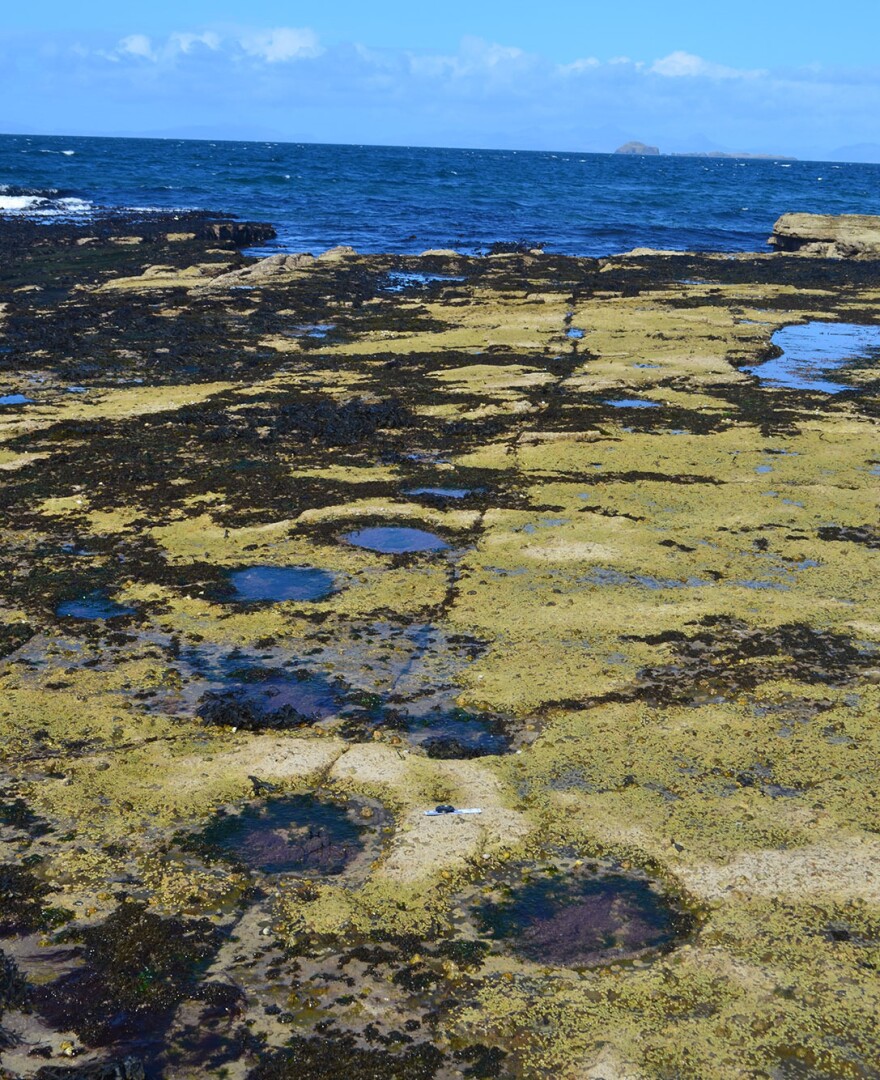Most people visit the Isle of Skye off the west coast of Scotland for the beautiful scenery or historic castles or maybe the Talisker Distillery.
Not Stephen Brusatte. He goes to Skye for the dinosaurs. And he's pretty jazzed about what he and his team discovered on a recent field trip. "What we found is the biggest dinosaur site that's ever been found in Scotland," he says.
Brusatte is a paleontologist from the University of Edinburgh. As he describes in a paper published today in the Scottish Journal of Geology, the site is a stretch of land along the island's northern coast where there's a plethora of footprints made by the long-necked dinosaurs that lived there 170 million years ago.
He got a look at the area last April on a trip to Skye. A colleague had found a few fossils in a low-lying area near the coast, so they decided to spend a day in the area searching for more.

"It was getting late, it was about 7 o'clock at night," Brusatte recalls. "The light was going down, the tide was coming in. We're on this platform of rock that's jutting out into the Atlantic. Time to go home. And as we were packing up and walking out, we noticed these depressions in the rock that looked kind of like potholes about the size of trash can lids."
There were several of them, and they seemed to be arranged in a zig-zag pattern across the rocks.
"And the picture just came into focus that we were looking at the trackways of these giant dinosaurs," Brusatte says.
Giant is the word. Brusatte says the tracks were probably made by sauropod dinosaurs — beasts some 50 feet long and weighing 15 to 20 tons.
The tracks aren't the first giant dinosaur footprints found on Earth, but Brusatte says these are slightly unusual because they were found in an area that once was a lagoon.
"We just normally don't think of dinosaurs as animals that are frolicking around in the water like that," Brusatte says. "We think of them as these animals thundering across the land. But these dinosaurs here were very much at home near the water and even in the water."
Most people also likely don't tend to think of dinosaurs as hanging out in Scotland, but apparently that's wrong, too.
Copyright 2021 NPR. To see more, visit https://www.npr.org.



